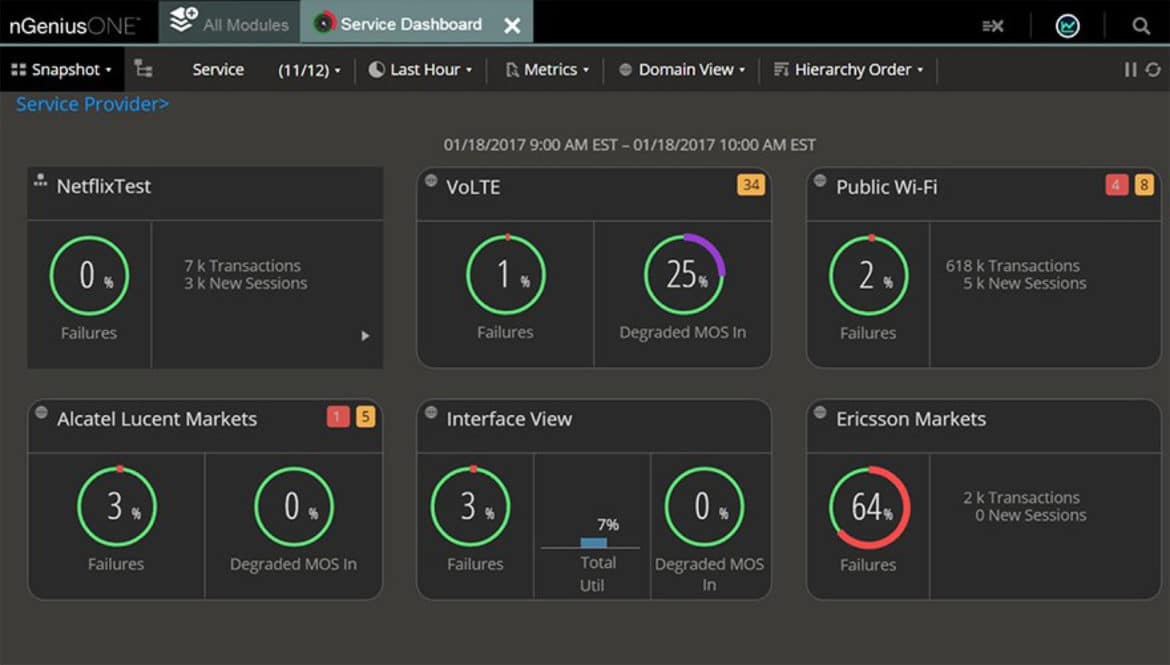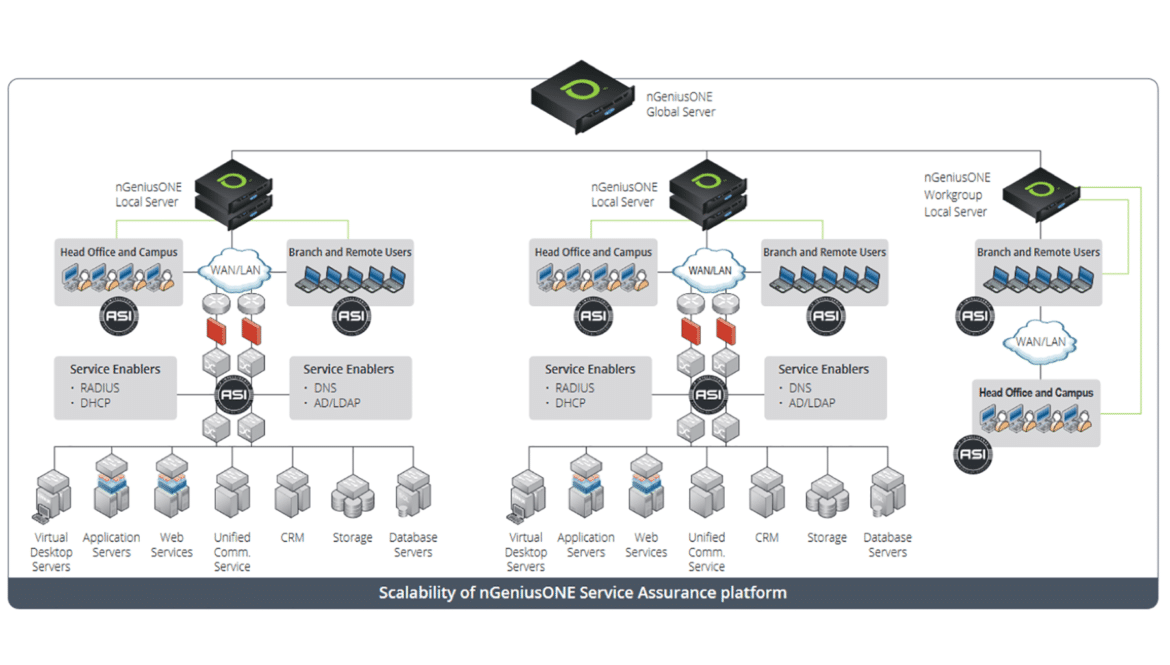NETSCOUT
Service Delivery Management

New concepts in IT Service Management are needed to keep down the cost of managing the provision of a service. Increasingly complex technology and new technologies such as cloud services, virtualisation and unified communication services have to be adapted.
NETSCOUT’s approach makes it possible to handle IT services within the context of the delivery of a service.
The “central service” approach covers critical interactions as well as dependencies between the infrastructure and the application layers over a more complexly divided environment. This makes it possible for the network, application and service delivery teams to view the application and network performance together in order to reach a perspective that is focused on the service and is consistent with the services that the business uses. As a result, IT organisations can monitor and achieve the status and availability of the various environments with greater efficacy. This means that performance problems can be proactively identified and triage impacts can be effectively identified, so that the root cause of the problems are quickly determined.
Focused on the monitoring of the service performance in the context of an end-to-end service delivery gives a unified approach to service delivery management. This is also a comprehensive approach to the monitoring of the network and application performance, which provides the following:
- A unified structure and an organised process for managing the delivery of services and the user experience across the IP network.
- Allows for a complete view over the networks, providers and applications so that all the aspects of the services provided, dependencies and user experience are understood.
- Monitors services such as those delivered to end users, including identifying the effect of the interactions with other services and the delivery infrastructure
- Support for any data service and unified services including speech via IP and video conference
- Consideration for security and guidelines that influence the service status and performance
- Support of the Cyber Security activities through improving awareness based on the situation with quicker responses
A service delivery management strategy is supported through the nGeniusONE Performance Management Platform, which uses advanced data collection technologies to provide an in-depth and detailed view into the service performance. A unified top-down perspective uncovers all the dependency relationships and the application behaviour. You can monitor and analyse effectively and display the performance of end-to-end connections of data, speech and video services.


This unified approach to Performance Management provides IT organisations with the following advantages:
- Accelerate the identification, triage and solution of problems with the provision of services by drastically cutting the average repair time with improved knowledge
- Facilitates a more proactive management model as you can detect problems early on with the provision of services and prevent the deterioration or downtime of services before a large number of users are affected
- Enables a greater yield on investment and quicker actual value by assisting in lowering overall IT operations costs through uninterrupted operations, greater efficiency and improved interdepartmental IT collaboration
Thanks to NETSCOUT’s extensively scalable and upgradable unified service delivery management structure, organisations are able to gain a superior sustainable view of the application performance and network performance, which ultimately leads to an improved understanding of the service delivery and user experience This visibility and knowledge give you the opportunity of using a proactive service management strategy and enjoying increased operational flexibility, which in turn help the IT organisation to accomplish the following:
- Secure the availability and continuity of the service, protect the user experience and enable the IT organisation to fulfil defined SLAs.
- Optimise the provision of services, increase IT efficiency by using the existing infrastructure, thereby improving the protection of investments and delaying spending on capital expenditures
- Speed up the capability to resolve problems with decisive identification of triage and causes, which results in an impressive reduction in the average repair time
- Breakdown of the operational and tool-based silos facilitates an improved collaboration between the IT operations teams, giving them a broader view into the performance during the provision of IT services.
- Simplification of complex environments involved in the provision of services, reduction of operational and support costs, creation of transparency, which ultimately leads to the reduction of the overall IP operation costs.